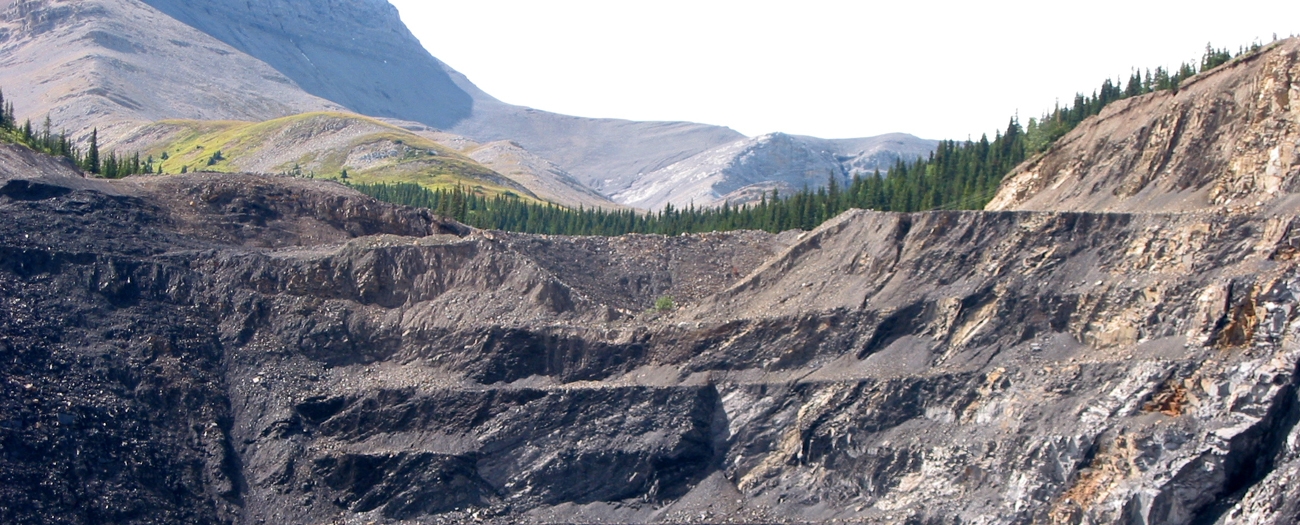Long before Alberta's first oil and gas boom, the province relied on coal to heat homes, generate electricity, and provide fuel for transportation. Coal was also the first energy commodity to be exported from the province, starting in the late 1800s. By the 1960s, however, oil and natural gas mostly replaced coal as Alberta's primary sources of energy.
Today, Alberta continues to use coal to generate electricity and export it to other countries where it is used to produce power and steel.
The following information is an overview about how the AER regulates coal mining, and how we ensure that the public and the environment are protected.
How is coal formed?
The coal mined in Alberta was formed in prehistoric swamps hundreds of millions of years ago. As plants died and broke down in swamps and bogs, the decaying plant matter slowly sank to the bottom where it was buried under layers of sand and mud, forming peat. Over time, a combination of heat and pressure hardened the peat into coal.
Coalbed methane, a form of natural gas, is a by-product of that process. Learn more about coalbed methane production and how we regulate it.
Learn more about the Coal in Alberta from the Alberta Geological Survey.
Types of Coal Mined in Alberta
Two types of coal are mined in Alberta: thermal and metallurgical.
- Thermal coal is burned to run steam turbines for generating electricity. It is also used to heat homes. Coal-fired electricity generation in Alberta will be phased out by 2030. However, coal will continue to be mined for international export. Learn more about the phase out on the Government of Alberta website.
- Metallurgical coal, which is harder than thermal coal, burns at higher temperatures and is used for smelting iron and making steel.
How We Regulate Coal Mining
It's our job to ensure that companies mine coal in Alberta responsibly. Our work starts before a mine is built and continues after mining is complete.
In order to develop Alberta's coal resources, companies must obtain a coal lease from the Government of Alberta.
There are three distinct phases in the life cycle for coal development: exploration, construction and operation, and closure. The AER oversees and regulates each phase. The AER reviews and make decisions on applications; conducts inspections and monitors for compliance and enforcement during the exploration, construction and operation phases; and issues reclamation certificates at the closure phase. Continue reading for more information on each of these phases.
Companies must submit applications and receive our approval before developing coal projects, regardless of the phase of development. Further applications are often required as a mine expands and evolves over time, as the project moves through the life cycle from exploration, to construction and operation, and finally reclamation.
Throughout the life of a coal mine, companies must comply with the following acts and associated rules, regulations, and requirements that govern energy development:
- Responsible Energy Development Act (REDA)
- Coal Conservation Act
- Environmental Protection and Enhancement Act (EPEA)
- Mines and Minerals Act (part 8)
- Public Lands Act (PLA)
- Water Act
AER Guidance and Reclamation Documents
Compliance and Enforcement
Throughout the life cycle of a coal project, we have significant oversight to ensure the company’s operations are meeting the conditions of our approval.
Our experts are on the ground conducting regular inspections and audits to make sure that companies are following our requirements.
We inspect all coal development projects several times throughout the year. The number of inspections per year at a mine is based on a risk assessment, which considers such factors as the mine’s size, location, performance, and compliance history, and the stage in its life cycle (exploration, construction, operation, or closure).
If we find that a company isn’t complying with our requirements, we’ll take the appropriate compliance and enforcement actions and share our findings on the Compliance Dashboard.
Sharing Information
Updated monthly, ST26: Alberta Coal Industry Monthly Statistics shows how much coal is produced, processed, and exported from Alberta. The report includes information on coal producers, mine types, coal types, and coal volumes.
Our statistical report ST45: Operating and Abandoned Coal Mines in Alberta contains information on mines in Alberta dating back to 1880. The report also includes an interactive coal mine map viewer, which allows users to view and locate coal mines across Alberta. Launch Viewer: Coal Mine Map Viewer
ST98: Alberta's Energy Outlook provides supply and demand estimates for the previous year and a supply and demand forecast for the next ten years for Alberta’s coal resources.
The Alberta Geological Survey’s website provides more information about the types of coal found in our province.


